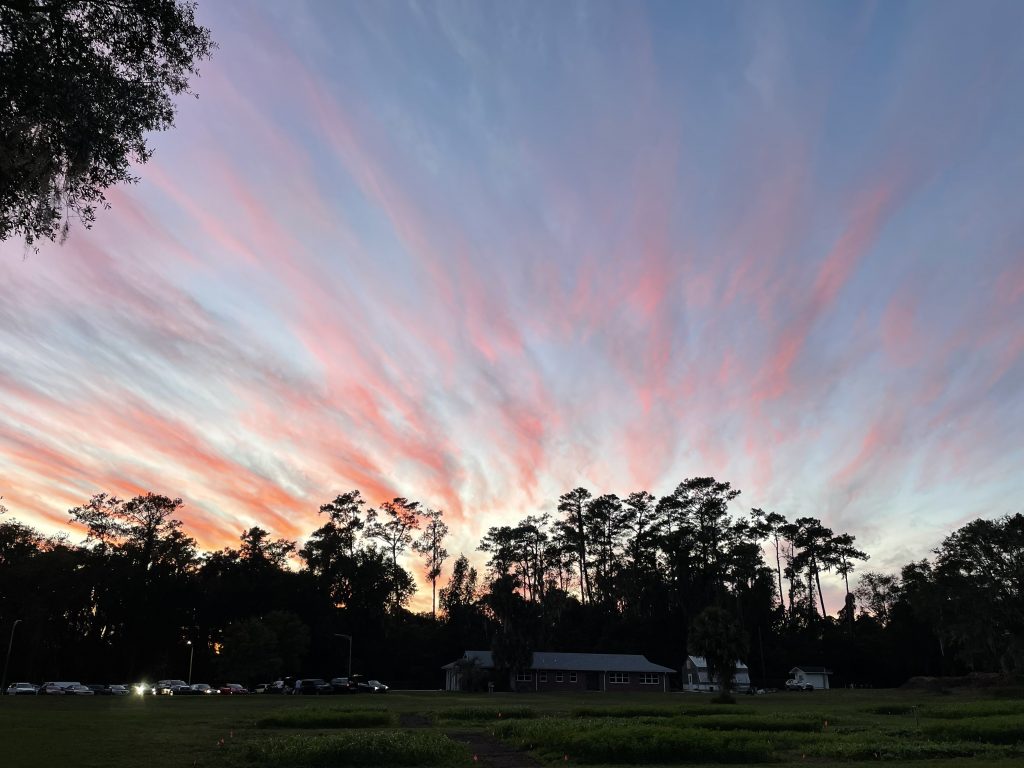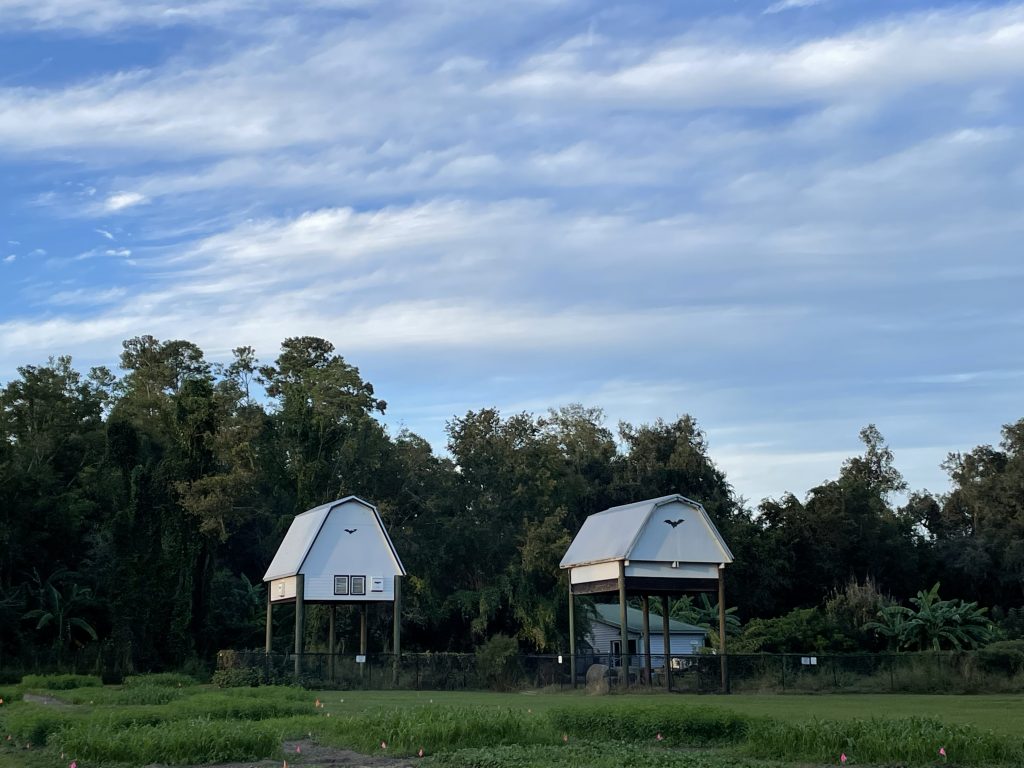Fresh off our bat kayak adventure, Doug and I headed to Gainesville, Florida, where we hoped to make a stop at the University of Florida Bat Houses. We did, and it was awesome!
There are two large bat houses in a field near a lake on the UF campus. We arrived early to take in the scene, then found a spot to wait. The bats normally emerge from the bat houses about 15 to 20 minutes after sunset and then spend the night feeding on insects.
While we were waiting we noticed several hawks arriving in settling in nearby trees. I quickly Googled to find out if hawks eat bats, and yes, indeed, they do! Who knew?


Sure enough, as dusk fell, I was watching through my binoculars and could suddenly detect activity under the bat houses. Then we looked to the sky and saw thousands and thousands of bats swooping up, one trail of bats come right near us, and another visible across the field heading in another direction. It was amazing to see, and we were both delighted.
We also saw some hawks charge into the action to grab an evening meal.
After 15 minutes or so the action died down and we headed back to our van. It was a short but exciting display!
While there are 13 species of bats that live in Florida, the most common species in these bat houses is the Brazilian free-tailed bat. Southeastern myotis and evening bats also make their home here. While the two bat houses can hold 750,000 bats, the estimated population at present is 450,000 to 500,000 bats.
The bats hunt for moths, flies, wasps, mosquitoes, and more, flying up to 25 mph and traveling up to 30 miles every night. The UF website says they eat 2.5 billion (billion!) insects every night! They return home before dawn.

While bats are often seen as creepy, their insect consumption is vital to our ecosystem. But they way they fly and hunt using echolocation is absolutely amazing. From the UF website:
Bats utilize a sophisticated ultrasonic system of navigation and finding prey known as echolocation. By emitting high-pitched sounds (inaudible to human ears) from their mouths and monitoring the bounced sound waves with super-sensitive ears, they locate and eat flying insects at the rate of up to 1,000 per hour while navigating through woods, around buildings and people, and avoiding collisions. Bats also emit a wide range of sounds audible to humans known as “colony chatter,” a sophisticated form of communication between members.
The UF website has some videos of the bats inside the bat house, which you can watch on their website, along with a video on the history of the bat houses. And here are some of our videos from the night:





One thought on “University of Florida Bat Houses”